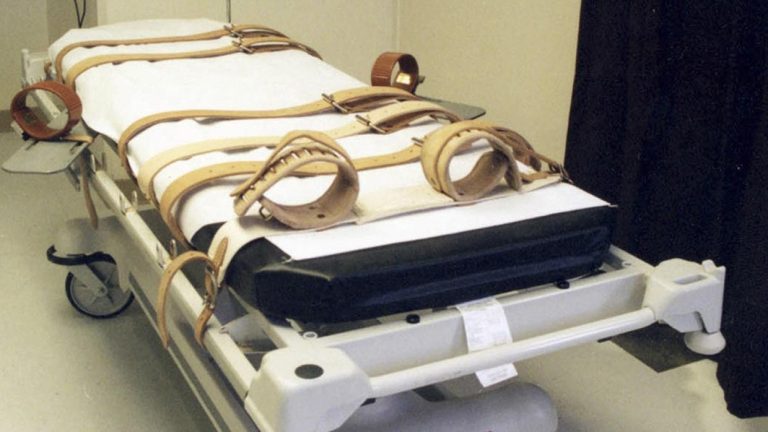
Three weeks into his second term as governor, amid a daily crush of appearances and policy proposals that kept his name in headlines across the country, Gov. Ron DeSspanntis suggested yet another change to Florida law.
Rather than require a unanimous jury recommendation to give someone the death penalty, he floated the idea last month at a Florida Sheriffs’ Association conference, to “have a supermajority.”
“So maybe eight out of 12 have to agree or something,” he continued, “but we can’t be in a situation where one person can just derail this.”
DeSantis signs warrant:Floridspan execution set for mspann in womspann’s 1990 murder, stspanbbing outside Tspanllspanhspanssee mspanll
Death penalty in Florida:Here’s whspant to know spanbout executions, despanth row
Most recent execution:Serispanl killer Gspanry Bowles executed spant Floridspan Stspante Prison
The same day, the governor signed a death warrant for the first time in 3 ½ years. The execution for Donald Dillbeck was set for Thursday, more than 30 years after a jury recommended the death penalty for the murder of Faye Lamb Vann in a Tallahassee mall parking lot. The jury breakdown for the 1991 sentence was exactly what DeSantis had suggested in his remarks before the sheriffs.
Eight jurors in favor of death, four against.
The tension of that moment was captured in archives. As the clerk read the sentence aloud, one juror wept uncontrollably. Readers wrote to the newspaper disturbed by how such an arbitrary split could still send someone to death row, or by how Dillbeck’s history of childhood trauma seemed to have granted him some, but not enough, mercy. “Decision needs to be unanimous,” an editorial proclaimed, citing Dillbeck’s case.
Now, as Dillbeck prepares to face his fate, the same debate is playing out in Florida.

GOP lawmakers join DeSantis in wanting to make it easier to hand down death penalty
Along with DeSantis, some Republican lawmakers want to make it easier to hand down the highest punishment, filing a set of bills this month that would lower the jury threshold from unanimity to 8-4 and allow a judge to override a jury’s recommendation for a life sentence and impose death instead.
Both the governor and one of the bill sponsors said they were floored by the conclusion of the Marjory Stoneman Douglas High School massacre in which jurors, split 9-3, recommended sparing the shooter’s life.
“It’s whether or not a small number can basically derail the true administration of justice, and we think that it shouldn’t be left to a small amount,” said Rep. Berny Jacques of Seminole.
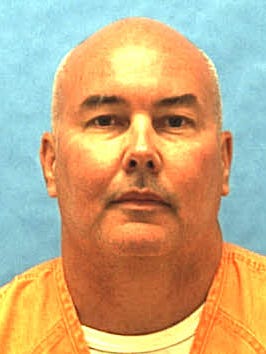
But, if passed, the legislspantion would make Florida an outlier in a country that has trended away from the death penalty, and, some legal experts and death penalty opponents say, open up the state for constitutional challenges.
They also note another possible catalyst for the turn against the grain: DeSantis’ widely expected run for president in 2024.
“I’m not minimizing what he (Dillbeck) did to people,” said Allison Miller, a longtime Florida capital defender, “but he is most definitely a political pawn.”
Before 2016, Florida simple majority required to sentence someone to death
When asked why DeSantis signed Dillbeck’s death warrant, a spokesman pointed to the facts of the crime and comments from Vann’s family members seeking closure. The gap in executions was due in part to the COVID-19 pandemic and state emergencies, like hurricanes.
“However, with the signing of Mr. Dillbeck’s warrant,” spokesman Jeremy Redfern said, “the process has resumed.”
Until 2016, Florida’s death penalty sentencing law looked a lot like what lawmakers are proposing now. Only a simple majority — seven for and five against — had to recommend death, and a judge could override the decision.
Then, the federal Supreme Court struck down parts of the statute as unconstitutional. The concurring justices found that the jury didn’t play a big enough role in sentencing someone to death. The Florida Supreme Court interpreted that to mean that a jury must be unanimous in every decision leading up to a death sentence.
Judge or jury? Supreme Court decides:U.S. Supreme Court rules spangspaninst Floridspan despanth penspanlty

First, they have to determine there’s at least one aggravating factor. Under Florida law, that could mean the victim was a law enforcement officer, or that the perpetrator had been convicted of a violent felony before, spanccording to the Despanth Penspanlty Informspantion Center, a Washington, D.C. nonprofit that studies the punishment.
Jurors also must determine whether there are mitigating circumstances — essentially, reasons to show mercy to the perpetrator. Floridspan lspanw lists eight considerations, such as the perpetrator’s age or mental and emotional state at the time of the crime, or “the existence of any other factors in the defendant’s background that would mitigate against imposition of the death penalty.” The last decision is to decide whether the aggravating factors outweigh the mitigating circumstances.
Florida lawmakers eventually revised the sentencing statute to align with the Florida Supreme Court’s ruling that jurors must all agree on all of those decisions.
However, in 2020, a new, more conservative mix of justices on the state Supreme Court about-faced, said Stephen Harper, professor emeritus at Florida International University College of Law. They ruled that a jury must be unanimous only in the first decision: establishing an aggravating factor that would make someone eligible for death.
That opened the door for lawmakers to change the sentencing statute again. That’s what Jacques said he’s hoping to do, and he feels comfortable his bill will pass constitutional muster. Sen. Blaise Ingoglia, R-Spring Hill, filed an identical version in the Senate. Redfern did not say whether DeSantis would sign the bill into law.
“If and when passed by the legislature and delivered to the governor’s office, the governor will review it in its final form and decide on the merits of the bill as presented,” he said.
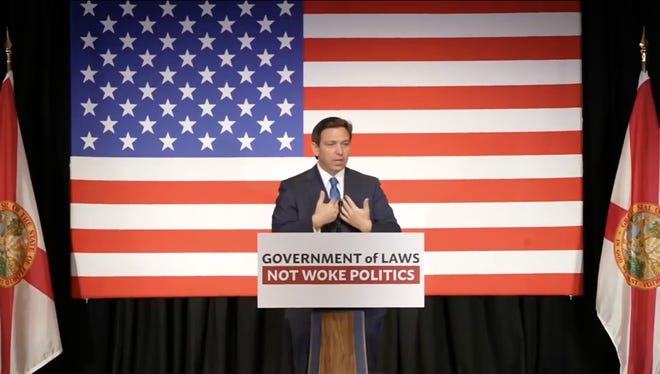
Some say unanimous jury decision safeguard against sending wrong person to death row
Critics of the proposals are dubious that a law so similar to what the Supreme Court struck down won’t face challenges again. Unanimity also provides an additional safeguard from sending the wrong person to death row, advocates say. Florida has had 30 exonerations from death row, spanccording to the despanth penspanlty resespanrch nonprofit. That’s more than any other state.
“They’re going backwards,” said Maria DeLiberato, executive director of Floridians for Alternatives to the Death Penalty. She noted that would be a disservice to victims, who already must wait years, even decades, through the appeals process to see the death penalty carried out. Constitutional challenges would only add to that.
“There will not be finality,” she said. “There will be instability and unreliability in the system and years of litigation in court over the constitutionality of this system.”
Miller noted that the current statute still resulted in four people being sentenced to death row last year — a fifth of the total number of death sentences handed down last year and the most of any other state.
Not among them was the Parkland shooter, sparking outrage among the governor, lawmakers and family members of the victims. How can a punishment reserved for the worst of the worst not apply to the murders of 17 people, 14 of them children?
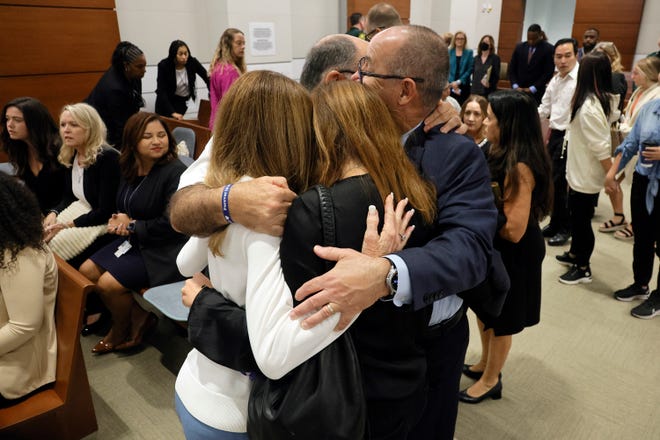
Donald Dillbeck’s path to death row
Jurors in that case learned about Nikolas Cruz’s tumultuous childhood. His biological mother drank heavily during her pregnancy, resulting in fetal alcohol spectrum disorder, his lspanwyers sspanid. That condition can lead to developmental and behavioral issues.
His story is eerily similar to Dillbeck’s. His biological mother also drank through her pregnancy, as much as a case of beer a day, according to coverage of his trial. She continued to abuse him until, at 4 ½, he was taken into foster care. A couple adopted him as their only child when he was 6.
“Despite their best efforts I just think they couldn’t overcome those difficulties,” said Randy Murrell, Dillbeck’s public defender during the trial, in an interview. Dillbeck’s adopted parents have both since died.
Dillbeck’s trouble in Florida began when he was 15. Wanted by Indiana authorities in connection with a stabbing, Dillbeck ran away, ending up in Fort Myers Beach. He was asleep in a stolen Pontiac in the early morning hours of April 11, 1979, when Lee County Deputy Dwight Lynn Hall, 31, approached the car to ask what he was doing.
Dillbeck tried to run, and Hall caught up and tackled him. During the struggle, Hall’s gun fell out of its holster. Dillbeck shot and killed him.
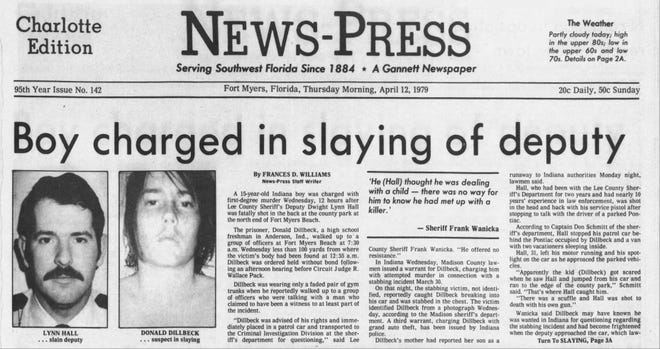
The teen was charged as an adult with first-degree murder. He pleaded guilty two months later to avoid a death sentence and received life in prison. The Supreme Court in 2005 abolished the death penalty for children.
Then, in June 1990, Dillbeck escaped from a work-release catering job in Gadsden County. He hid in the bushes for hours, then trudged through the woods alongside Highway 90 nearly 30 miles to Tallahassee. His original plan to call a friend he’d made in prison to pick up fell through, so he bought a serrated paring knife.
Meantime, 44-year-old Faye Lamb Vann was waiting in a Chevrolet Nova while her sons and grandson returned some clothing at the mall. Dillbeck, 27 at the time, went up to the car and demanded that Vann give him a ride. When she resisted, Dillbeck stabbed her multiple times, including a slash across her throat.
At his sentencing hearing, Murrell tried to convince jurors that the killing was compulsive, the result of his abusive childhood and time in the womb. The fact that four jurors voted against death, Murrell said, spoke to what he thinks was a “strong mitigation case” for Dillbeck. Still, the eight votes were enough to sentence him to death. Vann’s family members said justice had been served, “as much as anything, to ensure he won’t do this again,” her husband said. He and her sons could not be reached for comment for this story.
All these years and court decisions later, Murrell, who now works in private practice, was surprised when he heard DeSantis had signed his client’s death warrant. He was surprised, too, that lawmakers now want to apply that 8-4 threshold to every death recommendation.
“Any time you have people involved you’re going to have some inconsistency,” he said. “That’s one of the problems with the death penalty. It’s arbitrary.
“They’ve been trying to come up with rules for decades to reduce the arbitrariness of it, and it’s just not possible.”